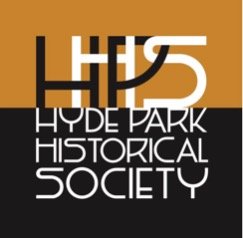Hyde Park. 1870. Retrieved from the Digital Public Library of America, https-//digitalcollections.nypl.org/items/efe91850-8129-0135-1981-3331b3ae2dd1
1833-1889: Hyde park’s Beginnings
The history of Hyde Park begins with the arrival in Chicago of a young lawyer, Paul Cornell. He was descended from a family which first arrived in the “New World” in 1638. His cousin, Ezra Cornell, was the founder of Cornell University. Cornell saw the potential in the land along Lake Michigan south of the city, and in 1853 he purchased 300 acres of land, between what are now 51st and 55th streets, deeding some to the Illinois central Railroad for the purpose of establishing a passenger station for commuting to the city. He called the area Hyde Park, after the area of the same name in London.
“The Township of Hyde Park” included the entire southeast side of the city, from 39th Street on the north, city limits on the south, State Street on the west and Lake Michigan on the east. Prior to the 1830s, the land which comprised “The Township of Hyde Park” was previously been occupied by the Potawatomi and other native tribes, until the 1830s when the federal government colonized the area and enforced the Indian Removal Act. The removal and violence toward native people set the foundation for Paul Cornell to “purchase” the land which was then referred to as the Township of Hyde Park.
Paul Cornell built a hotel and sold wealthy Chicagoans the idea of Hyde Park as a resort. This exclusionary approach did benefit him financially, as within a few years he was able to sell lots to some of the same people for year round houses in the new suburb, Hyde Park Village.
Within ten years there were one thousand residents in the community. His holdings grew to comprise forty-eight square miles–some areas designated for manufacturing, others for lower-cost housing. This larger area, Hyde Park Township, was annexed to the city of Chicago in 1889.
Residential development in “Hyde Park Center” proceeded even more quickly after the 1871 Chicago Fire. Many of the city’s “captains of industry” built large estate homes, especially in the Kenwood area north of 51st Street. The Swift and Wilson meat packing families, the Ryerson Steel family, railroad executives, and other businesses and professional men were among the owners in those early days.
Another important development during this time period was Oak Woods Cemetery, which was granted a perpetual charter by the State of Illinois 1853. It would be designed by the known landscape architect, Adolph Strauch and would be the final resting place for many of the early developers of Hyde Park.



